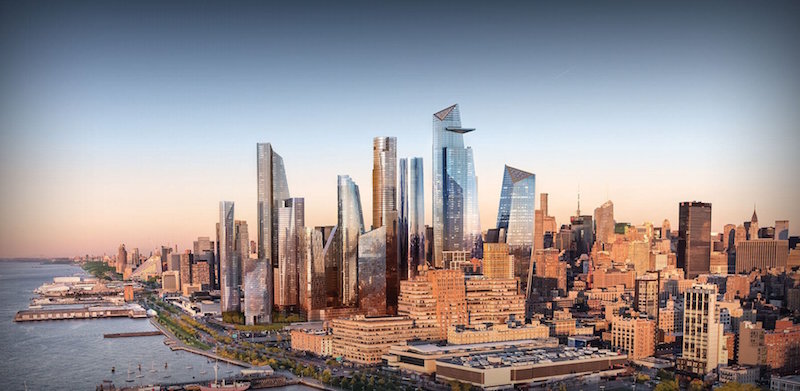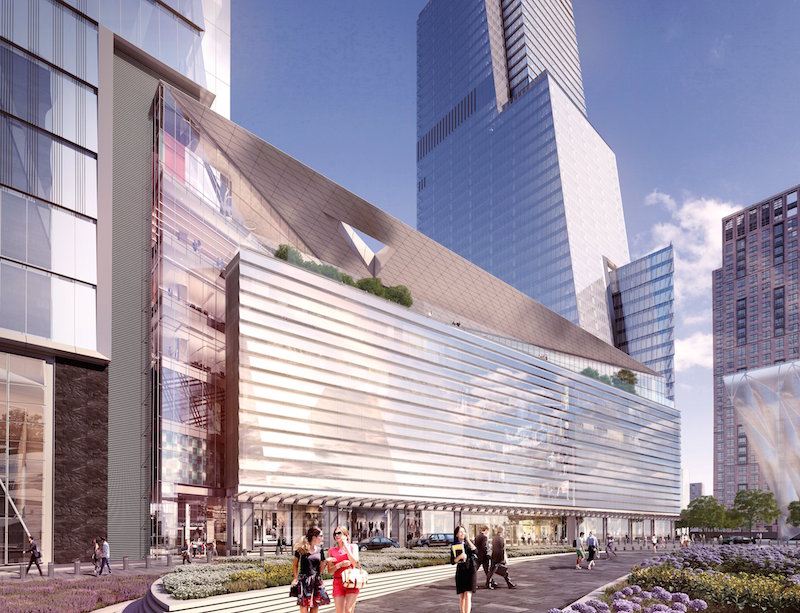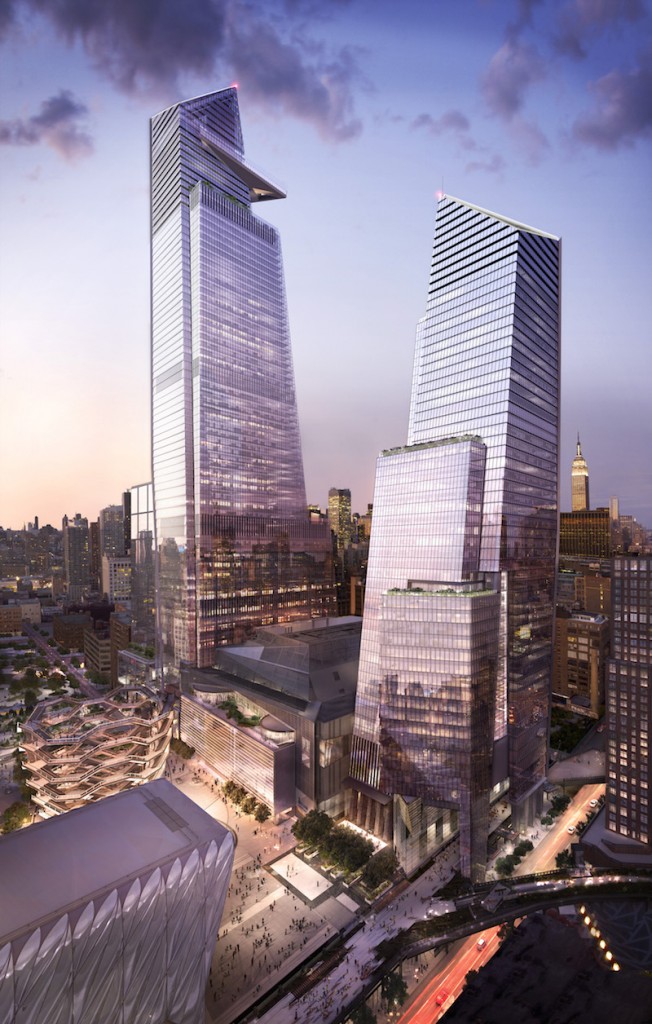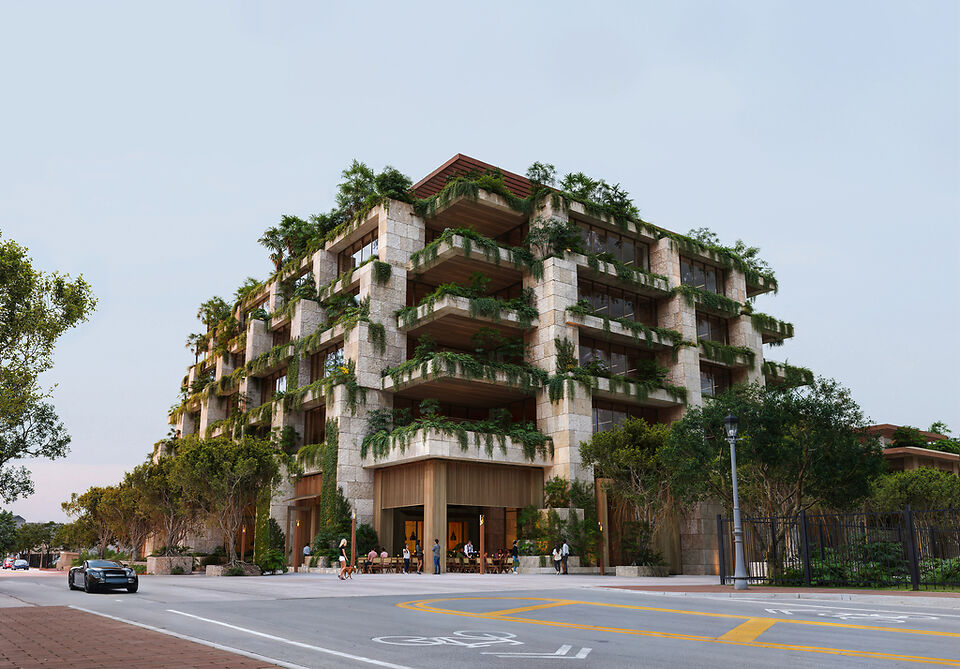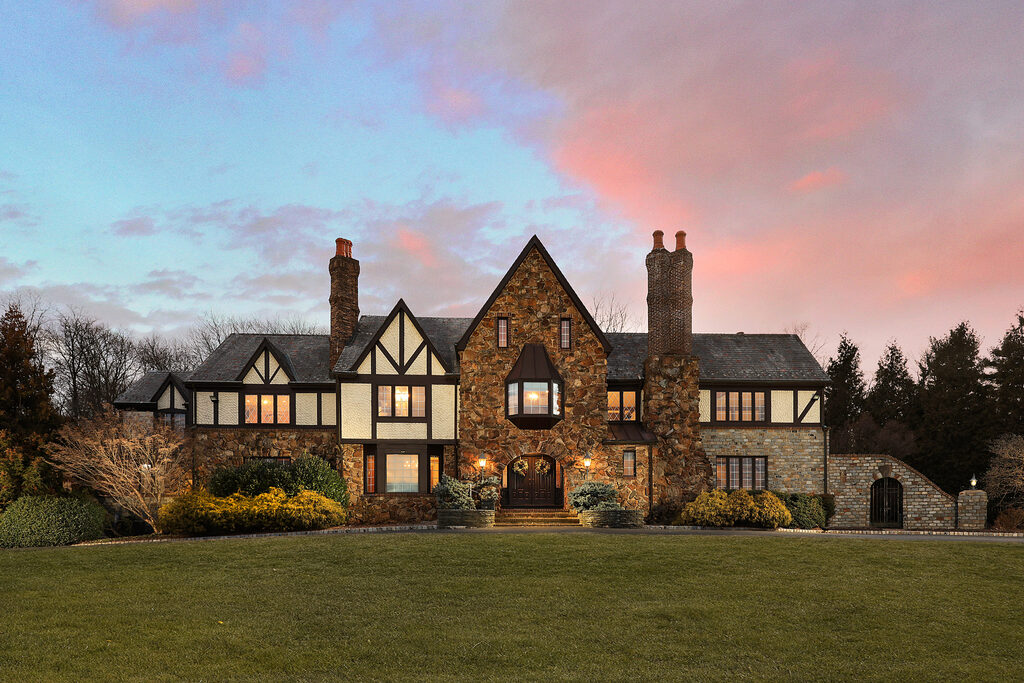On the western bank of midtown, Manhattan New York history is being made. A man-made neighborhood, built by thorough design, engineering, architecture, and urban planning practices—Hudson Yards—is on the rise. Throughout the history of New York, man-made neighborhoods have come and gone, never truly catching the zeitgeist and coming to fruition as a destination of “cool” in the city. From the Robert Moses era, to Co-Op City, to Battery Park, to Long Island City, these constructed neighborhoods often feature great buildings, complete with luxury residences and high-end amenities for tenants, but that miss the boat of contributing to the city at large. Hudson Yards, the mix-use venture driven primarily by Related Group and Oxford Properties Group, is on a fast track to accomplishing a feat previously thought impossible: making people—even locals—want to go hang out in Midtown.
The key to a great neighborhood, wherever it is, is a sense of community. Most New York neighborhoods come with this organically built-in. Places like Greenwich Village, the Lower East Side, even the Upper East Side, have gone through their evolutionary changes over decades and decades. For a man-made neighborhood to plant itself down and keep up with the city’s pace on trends and cultural relevancy would be akin to jumping out of a moving vehicle and expecting to land on one’s feet. Neighborhoods like Battery Park City offer some of the most beautiful penthouse apartments and luxury homes in the Manhattan, but other than a Shake Shack and a Regal Cinema, the neighborhood doesn’t feature much that can’t be attained elsewhere (Exception: ferries to the Statue of Liberty.) At Hudson Yards, the development teams are bringing in top-tier retailers, restaurants, and event spaces that are already drawing in crowds, and keeping them coming back for luxury shopping around the holidays, or for dinner at a world-class chef’s restaurant.
Restaurants in Hudson Yards aren’t just another outpost of a chain, or a spin off of an already-popular city hotspot. Hudson Yards is taking the time to give some of New York’s best culinary minds a chance to explore. Porchlight, a new cocktail bar in the neighborhood with southern vibes and rocking chairs, is the first stand-alone bar project from Danny Meyer, the visionary behind Union Square Café, Eleven Madison Park, and so many others, and located just on the outskirt of Hudson Yards at 28th and 11th. Death Avenue Brewing and Roasting will also be serving both coffee and beer to those at Hudson Yards while cooking up home-style favorites. The name also is a callback to the nickname for 10th Avenue from a century earlier, dubbed for the deadly freight train that ran up the street. Hudson Yards is also bringing in the big guns though for dining options with some haute cuisine know-how. Per Se’s Thomas Keller and The Porter House Bar and Grill’s Michael Lomonaco both working on a new restaurant for the area—both chefs already working closely with Related at the developers other property, The Shops at Columbus Circle. “The energy of New York is really the people,” Lomonaco told Hudson Yards, “In this way, we’re going to discover together with our guests what Hudson Yards really means.” The real genius behind the culinary happenings at Hudson Yards though is the seamless blending of fine dining and the cult favorites of the newer, younger tastemakers in New York. While fine dining stalwarts, in any project, give an older, wealthier crowd a craving to come by for, Hudson Yards is thinking younger too by creating a new Momofuku project with David Chang. In a statement with Hudson Yards, Chang says, “We need to offer something that’s more experiential than what we’ve ever done before. Hudson Yards provides that opportunity for both chefs and diners alike.”
The planning of Hudson Yards extends deeper into retail too. Similar to Related’s Columbus Circle shopping center, luxury brands are the lay of the land at Hudson Yards. Neiman Marcus is opening its first New York City store, a tri-level, 250,000 square foot epicenter to fashion in Manhattan. Other luxury brands include Coach, Stuart Weitzman, Tory Burch, and many others, totaling 100 shops in all. The Shed, a new venue for the area, will also be home to future New York Fashion Week events.
The entire neighborhood stretches from 28th Street to 43rd Street, with Related’s development within the neighborhood reaching from 30th to 34th Street between 10th and 12th Avenue. That means there is plenty of space for greenery in Midtown’s otherwise silver-and-steel looking façade. To fill this need, Public Square and Gardens covers four acres from 10th to 11th Avenue and is filled with benches, playgrounds, and the go-to Instagram shot of the neighborhood, British architect Thomas Heatherwick’s gigantic sculpture, Vessel.
Of course, the neighborhood also exceeds all expectations in the real estate aspect of the neighborhood too. Fifteen Hudson Yards will be the first residential tower constructed in the area, with over 285 luxury condos available for sale. The building will also have an aquatics and fitness center on the 50th amenity floor designed by The Wright Fight. The building also features some of the best penthouse views in the city, with Penthouse 88B for instance overlooking not just the park or sculpture below, but offering panoramic views stretching all the way to the Statue of Liberty. One Hudson Yards will also will also offer 178 luxury rental residences across 33 floors, as another tower to adorn the city skyline with breathtaking views of the city below it, and is located at 530 West 30th Street just off the Hudson Yards site.
Neighborhoods come and go and shift with time. The cool neighborhood today will certainly be superseded by another locale, and then be reincarnated as a new cool hotspot—it’s the life cycle of any city. Where neighborhoods drift off and fall into zeitgeist purgatory is when there’s nothing to retain visitors or to draw locals back again and again. The mission of Hudson Yards wasn’t to be a real estate venture though, nor was it to be a destination for foreign investors to hold assets like other midtown areas. It’s mission was to be a bona fide New York neighborhood—and with the team behind the project making great decision after great decision, it feels like a mission accomplished.

